A Comprehensive Assessment of Storage Elements in Hybrid Energy Systems to Optimize Energy Reserves
Abstract
:1. Introduction
2. Electrical Energy Storage Systems
2.1. Supercapacitor
2.2. The Supercapacitor in Hybrid Energy Storage Systems
2.3. Superconducting Magnet Coil
2.4. The Superconducting Magnetic Coil in Hybrid Energy Storage Systems
3. Mechanical Energy Storage System (MESS)
3.1. Pumped Hydro
3.2. Pumped Hydro in Hybrid Energy Storage Systems
3.3. Compressed Air Energy Storage
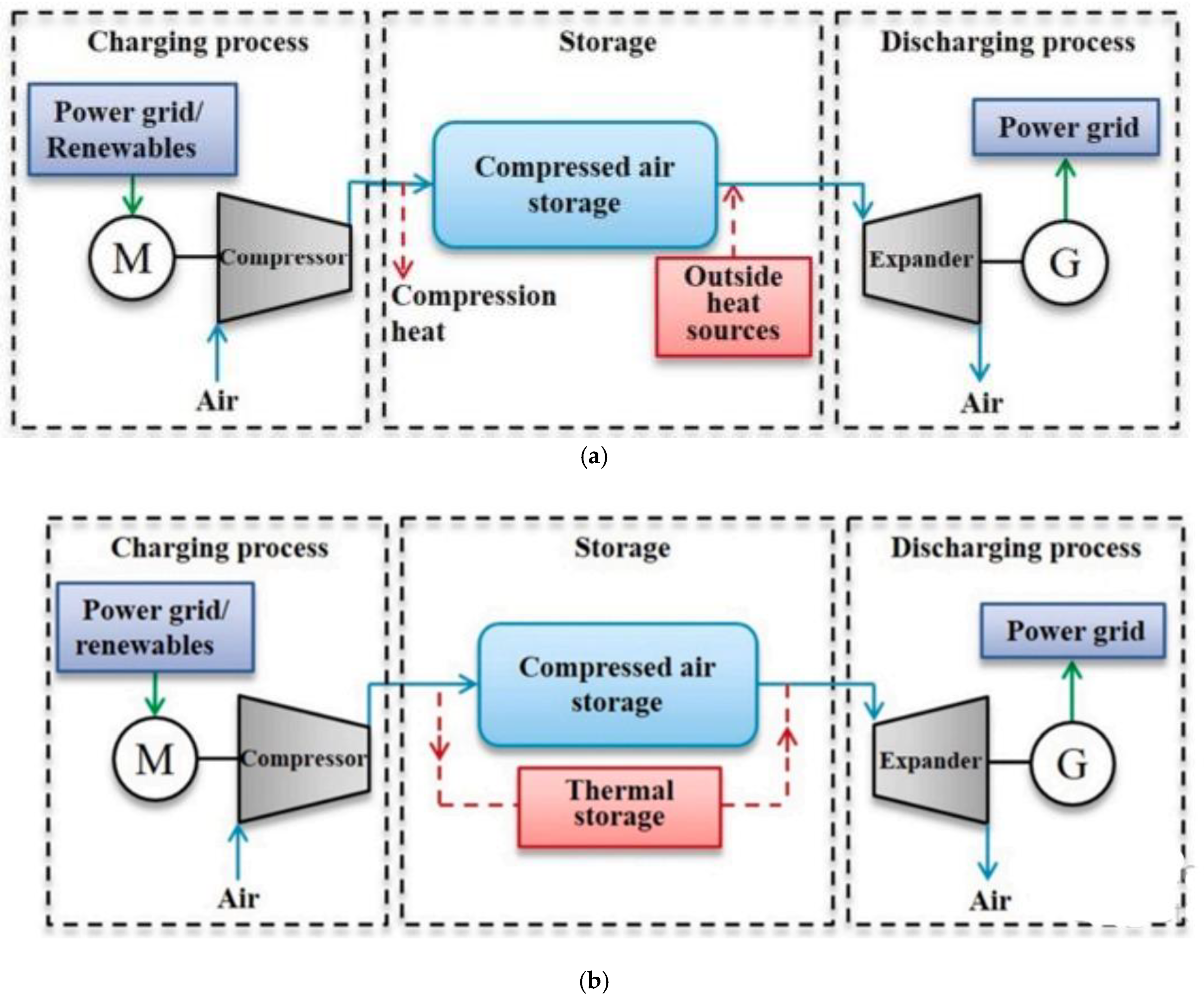
3.4. Compressed Air in Hybrid Energy Storage Systems
3.5. Flywheel Energy Storage System
3.6. Flywheel Energy Storage in Hybrid Energy Storage Systems
4. Thermal Energy Storage System (TESS)
4.1. Thermoelectric Energy Storage
4.2. Concentrated Solar Power Technology
4.2.1. Parabolic Trough
4.2.2. Solar Power Tower
4.2.3. Dish Stirling
5. Chemical Energy Storage System (CESS)
5.1. Battery Storage System
5.2. Battery in Hybrid Energy Storage Systems
5.3. Hydrogen Storage System
5.4. Hydrogen Storage in Hybrid Energy Storage Systems
6. Discussion
7. Conclusions
Author Contributions
Funding
Institutional Review Board Statement
Informed Consent Statement
Data Availability Statement
Acknowledgments
Conflicts of Interest
References
- Sterner, M.; Stadler, I. Handbook of Energy Storage: Demand, Technologies, Integration; Springer: Berlin/Heidelberg, Germany, 2019. [Google Scholar]
- May, G.J.; Davidson, A.; Monahov, B. Lead batteries for utility energy storage: A review. J. Energy Storage 2018, 15, 145–157. [Google Scholar] [CrossRef]
- Martinez-Bolanos, J.R.; Udaeta, M.E.M.; Gimenes, A.L.V.; da Silva, V.O. Economic feasibility of battery energy storage systems for replacing peak power plants for commercial consumers under energy time of use tariffs. J. Energy Storage 2020, 29, 101373. [Google Scholar] [CrossRef]
- Nazir, H.; Batool, M.; Osorio, F.J.B.; Isaza-Ruiz, M.; Xu, X.; Vignarooban, K.; Kannan, A.M. Recent developments in phase change materials for energy storage applications: A review. Int. J. Heat Mass Transf. 2019, 129, 491–523. [Google Scholar] [CrossRef]
- Ahmad, F.; Khalid, M.; Panigrahi, B.K. Development in energy storage system for electric transportation: A comprehensive review. J. Energy Storage 2021, 43, 103153. [Google Scholar] [CrossRef]
- Doluweera, G.; Hahn, F.; Bergerson, J.; Pruckner, M. A scenario-based study on the impacts of electric vehicles on energy consumption and sustainability in Alberta. Appl. Energy 2020, 268, 114961. [Google Scholar] [CrossRef]
- Ahmad, M.; Jabeen, G. Dynamic causality among urban agglomeration, electricity consumption, construction industry, and economic performance: Generalized method of moments approach. Environ. Sci. Pollut. Res. 2020, 27, 2374–2385. [Google Scholar] [CrossRef] [PubMed]
- Yang, Y.; Bremner, S.; Menictas, C.; Kay, M. Battery energy storage system size determination in renewable energy systems: A review. Renew. Sustain. Energy Rev. 2018, 91, 109–125. [Google Scholar] [CrossRef]
- Sarkodie, S.A.; Adams, S.; Owusu, P.A.; Leirvik, T.; Ozturk, I. Mitigating degradation and emissions in China: The role of environmental sustainability, human capital and renewable energy. Sci. Total Environ. 2020, 719, 137530. [Google Scholar] [CrossRef]
- Khan, I.; Hou, F.; Le, H.P. The impact of natural resources, energy consumption, and population growth on environmental quality: Fresh evidence from the United States of America. Sci. Total Environ. 2021, 754, 142222. [Google Scholar] [CrossRef]
- Abdullah, M.A.; Muttaqi, K.M.; Agalgaonkar, A.P. Sustainable energy system design with distributed renewable resources considering economic, environmental and uncertainty aspects. Renew. Energy 2015, 78, 165–172. [Google Scholar] [CrossRef]
- Gür, T.M. Review of electrical energy storage technologies, materials and systems: Challenges and prospects for large-scale grid storage. Energy Environ. Sci. 2018, 11, 2696–2767. [Google Scholar] [CrossRef]
- Martins, R.; Hesse, H.C.; Jungbauer, J.; Vorbuchner, T.; Musilek, P. Optimal component sizing for peak shaving in battery energy storage system for industrial applications. Energies 2018, 11, 2048. [Google Scholar] [CrossRef]
- Cossutta, M.; Pholboon, S.; McKechnie, J.; Sumner, M. Techno-economic and environmental analysis of community energy management for peak shaving. Energy Convers. Manag. 2022, 251, 114900. [Google Scholar] [CrossRef]
- Al-Mufti, M.G.; Ghani, R.A. Control of Battery Energy Storage System for Peak Shaving using Enhanced Time of Use Scheme. In Proceedings of the 2020 IEEE International Conference on Power and Energy (PECon), Virtual, 7–8 December 2020; pp. 224–228. [Google Scholar]
- Liu, S.; Wei, L.; Wang, H. Review on reliability of supercapacitors in energy storage applications. Appl. Energy 2020, 278, 115436. [Google Scholar] [CrossRef]
- Bing, L.; Jing, Z.; Daixian, L.; Na, N. Energy storage for peak shaving and frequency regulation in the front of meter: Progress and prospect. Energy Storage Sci. Technol. 2016, 5, 909. [Google Scholar]
- Amirante, R.; Cassone, E.; Distaso, E.; Tamburrano, P. Overview on recent developments in energy storage: Mechanical, electrochemical and hydrogen technologies. Energy Convers. Manag. 2017, 132, 372–387. [Google Scholar] [CrossRef]
- Wade, N.S.; Taylor, P.; Lang, P.; Jones, P. Evaluating the benefits of an electrical energy storage system in a future smart grid. Energy Policy 2010, 38, 7180–7188. [Google Scholar] [CrossRef]
- Tian, Y.; Zhao, C.-Y. A review of solar collectors and thermal energy storage in solar thermal applications. Appl. Energy 2013, 104, 538–553. [Google Scholar] [CrossRef]
- Mehrpooya, M.; Pakzad, P. Introducing a hybrid mechanical–Chemical energy storage system: Process development and energy/exergy analysis. Energy Convers. Manag. 2020, 211, 112784. [Google Scholar] [CrossRef]
- Park, J.H.; Heo, J.Y.; Lee, J.I. Techno-economic study of nuclear integrated liquid air energy storage system. Energy Convers. Manag. 2022, 251, 114937. [Google Scholar] [CrossRef]
- Ciupageanu, D.-A.; Barelli, L.; Lazaroiu, G. Real-time stochastic power management strategies in hybrid renewable energy systems: A review of key applications and perspectives. Electr. Power Syst. Res. 2020, 187, 106497. [Google Scholar] [CrossRef]
- Choudhury, S. A comprehensive review on issues, investigations, control and protection trends, technical challenges and future directions for Microgrid technology. Int. Trans. Electr. Energy Syst. 2020, 30, e12446. [Google Scholar] [CrossRef]
- Libich, J.; Máca, J.; Vondrák, J.; Čech, O.; Sedlaříková, M. Supercapacitors: Properties and applications. J. Energy Storage 2018, 17, 224–227. [Google Scholar] [CrossRef]
- Afif, A.; Rahman, S.M.; Azad, A.T.; Zaini, J.; Islan, M.A.; Azad, A.K. Advanced materials and technologies for hybrid supercapacitors for energy storage–A review. J. Energy Storage 2019, 25, 100852. [Google Scholar] [CrossRef]
- Farhadi, M.; Mohammed, O. Energy storage technologies for high-power applications. IEEE Trans. Ind. Appl. 2015, 52, 1953–1961. [Google Scholar] [CrossRef]
- Mukherjee, P.; Rao, V.V. Design and development of high temperature superconducting magnetic energy storage for power applications-A review. Phys. C Supercond. Its Appl. 2019, 563, 67–73. [Google Scholar] [CrossRef]
- Sinha, P.; Kar, K.K. Introduction to supercapacitors. In Handbook of Nanocomposite Supercapacitor Materials II; Springer: Cham, Switzerland, 2020; pp. 1–28. [Google Scholar]
- Wang, S.; Wei, T.; Qi, Z. Supercapacitor energy storage technology and its application in renewable energy power generation system. In Proceedings of ISES World Congress 2007; Springer: Berlin/Heidelberg, Germany, 2008. [Google Scholar]
- Qin, W.; Zhou, N.; Wu, C.; Xie, M.; Sun, H.; Guo, Y.; Pan, L. Mini-review on the redox additives in aqueous electrolyte for high performance supercapacitors. Acs Omega 2020, 5, 3801–3808. [Google Scholar] [CrossRef]
- Yu, M.; Feng, X. Thin-film electrode-based supercapacitors. Joule 2019, 3, 338–360. [Google Scholar] [CrossRef]
- Palchoudhury, S.; Ramasamy, K.; Gupta, R.K.; Gupta, A. Flexible supercapacitors: A materials perspective. Front. Mater. 2019, 5, 83. [Google Scholar] [CrossRef]
- Wang, X.; Wan, F.; Zhang, L.; Zhao, Z.; Niu, Z.; Chen, J. Large-area reduced Graphene oxide composite films for flexible asymmetric Sandwich and microsized Supercapacitors. Adv. Funct. Mater. 2018, 28, 1707247. [Google Scholar] [CrossRef]
- Zhao, Z.; Wang, S.; Wan, F.; Tie, Z.; Niu, Z. Scalable 3D Self-Assembly of MXene Films for Flexible Sandwich and Microsized Supercapacitors. Adv. Funct. Mater. 2021, 31, 2101302. [Google Scholar] [CrossRef]
- Zhang, J.; Zhang, G.; Zhou, T.; Sun, S. Recent developments of planar micro-supercapacitors: Fabrication, properties, and applications. Adv. Funct. Mater. 2020, 30, 1910000. [Google Scholar] [CrossRef]
- He, Y.; Chen, W.; Gao, C.; Zhou, J.; Li, X.; Xie, E. An overview of carbon materials for flexible electrochemical capacitors. Nanoscale 2013, 5, 8799–8820. [Google Scholar] [CrossRef]
- Mehmood, K.K.; Khan, S.U.; Lee, S.-J.; Haider, Z.M.; Rafique, M.K.; Kim, C.-H. A real-time optimal coordination scheme for the voltage regulation of a distribution network including an OLTC, capacitor banks, and multiple distributed energy resources. Int. J. Electr. Power Energy Syst. 2018, 94, 1–14. [Google Scholar] [CrossRef]
- Malik, F.H.; Khan, M.W.; Rahman, T.U.; Ehtisham, M.; Faheem, M.; Haider, Z.M.; Lehtonen, M. A Comprehensive Review on Voltage Stability in Wind-Integrated Power Systems. Energies 2024, 17, 644. [Google Scholar] [CrossRef]
- Feng, L.; Zhang, X.; Li, X.; Li, B.; Li, Y.; Xu, Y.; Guo, H.; Zhou, X.; Chen, H. Performance analysis of hybrid energy storage integrated with distributed renewable energy. Energy Rep. 2022, 8, 1829–1838. [Google Scholar] [CrossRef]
- Mariasiu, F.; Kelemen, E.A. Analysis of the Energy Efficiency of a Hybrid Energy Storage System for an Electric Vehicle. Batteries 2023, 9, 419. [Google Scholar] [CrossRef]
- Al-Sarraf, A.H.R. Preparation and study of a superconducting composite based on superconducting ceramic system. Prog. Ind. Ecol. Int. J. 2020, 14, 1–9. [Google Scholar] [CrossRef]
- Mukoyama, S.; Nakao, K.; Sakamoto, H.; Matsuoka, T.; Nagashima, K.; Ogata, M.; Shimizu, H. Development of superconducting magnetic bearing for 300 kW flywheel energy storage system. IEEE Trans. Appl. Supercond. 2017, 27, 3600804. [Google Scholar] [CrossRef]
- Shi, J.; Xu, Y.; Liao, M.; Guo, S.; Li, Y.; Ren, L.; Su, R.; Li, S.; Zhou, X.; Tang, Y. Integrated design method for superconducting magnetic energy storage considering the high frequency pulse width modulation pulse voltage on magnet. Appl. Energy 2019, 248, 1–17. [Google Scholar] [CrossRef]
- Li, J.; Zhang, M.; Yang, Q.; Zhang, Z.; Yuan, W. SMES/battery hybrid energy storage system for electric buses. IEEE Trans. Appl. Supercond. 2016, 26, 5700305. [Google Scholar] [CrossRef]
- Ise, T.; Kita, M.; Taguchi, A. A hybrid energy storage with a SMES and secondary battery. EEE Trans. Appl. Supercond. 2005, 15, 1915–1918. [Google Scholar] [CrossRef]
- Mahmoud, M.; Ramadan, M.; Olabi, A.-G.; Pullen, K.; Naher, S. A review of mechanical energy storage systems combined with wind and solar applications. Energy Convers. Manag. 2020, 210, 112670. [Google Scholar] [CrossRef]
- Koohi-Fayegh, S.; Rosen, M.A. A review of energy storage types, applications and recent developments. J. Energy Storage 2020, 27, 101047. [Google Scholar] [CrossRef]
- Chou, X.; Zhu, J.; Qian, S.; Niu, X.; Qian, J.; Hou, X.; Mu, J.; Geng, W.; Cho, J.; He, J.; et al. All-in-one filler-elastomer-based high-performance stretchable piezoelectric nanogenerator for kinetic energy harvesting and self-powered motion monitoring. Nano Energy 2018, 53, 550–558. [Google Scholar] [CrossRef]
- Carabin, G.; Wehrle, E.; Vidoni, R. A review on energy-saving optimization methods for robotic and automatic systems. Robotics 2017, 6, 39. [Google Scholar] [CrossRef]
- Hameer, S.; van Niekerk, J.L. A review of large-scale electrical energy storage. Int. J. Energy Res. 2015, 39, 1179–1195. [Google Scholar] [CrossRef]
- Olabi, A.; Onumaegbu, C.; Wilberforce, T.; Ramadan, M.; Abdelkareem, M.A.; Al, A.H. Critical review of energy storage systems. Energy 2021, 214, 118987. [Google Scholar] [CrossRef]
- Amiryar, M.E.; Pullen, K.R. A review of flywheel energy storage system technologies and their applications. Appl. Sci. 2017, 7, 286. [Google Scholar] [CrossRef]
- Cheng, C.; Blakers, A.; Stocks, M.; Lu, B. Pumped hydro energy storage and 100% renewable electricity for East Asia. Glob. Energy Interconnect. 2019, 2, 386–392. [Google Scholar] [CrossRef]
- Olabi, A.; Wilberforce, T.; Ramadan, M.; Abdelkareem, M.A.; Alami, A.H. Compressed air energy storage systems: Components and operating parameters–A review. J. Energy Storage 2021, 34, 102000. [Google Scholar] [CrossRef]
- Hino, T.; Lejeune, A. Pumped Storage Hydropower Developments. In Comprehensive Renewable Energy; Elsevier: Amsterdam, The Netherlands, 2012; pp. 405–434. [Google Scholar]
- Stocks, M.; Stocks, R.; Lu, B.; Cheng, C.; Blakers, A. Global atlas of closed-loop pumped hydro energy storage. Joule 2021, 5, 270–284. [Google Scholar] [CrossRef]
- Javed, M.S.; Ma, T.; Jurasz, J.; Amin, M.Y. Solar and wind power generation systems with pumped hydro storage: Review and future perspectives. Renew. Energy 2020, 148, 176–192. [Google Scholar] [CrossRef]
- Rehman, S.; Al-Hadhrami, L.M.; Alam, M.M. Pumped hydro energy storage system: A technological review. Renew. Sustain. Energy Rev. 2015, 44, 586–598. [Google Scholar] [CrossRef]
- Bocklisch, T. Hybrid energy storage systems for renewable energy applications. Energy Procedia 2015, 73, 103–111. [Google Scholar] [CrossRef]
- Cao, J.; Du, W.; Wang, H.; McCulloch, M. Optimal sizing and control strategies for hybrid storage system as limited by grid frequency deviations. IEEE Trans. Power Syst. 2018, 33, 5486–5495. [Google Scholar] [CrossRef]
- Chen, H.; Zhang, Z.; Guan, C.; Gao, H. Optimization of sizing and frequency control in battery/supercapacitor hybrid energy storage system for fuel cell ship. Energy 2020, 197, 117285. [Google Scholar] [CrossRef]
- Ma, T.; Yang, H.; Lu, L.; Peng, J. Pumped storage-based standalone photovoltaic power generation system: Modeling and techno-economic optimization. Appl. Energy 2015, 137, 649–659. [Google Scholar] [CrossRef]
- Ma, T.; Yang, H.; Lu, L.; Peng, J. Technical feasibility study on a standalone hybrid solar-wind system with pumped hydro storage for a remote island in Hong Kong. Renew. Energy 2014, 69, 7–15. [Google Scholar] [CrossRef]
- Kusakana, K. Optimal scheduling for distributed hybrid system with pumped hydro storage. Energy Convers. Manag. 2016, 111, 253–260. [Google Scholar] [CrossRef]
- Notton, G.; Mistrushi, D.; Stoyanov, L.; Berberi, P. Operation of a photovoltaic-wind plant with a hydro pumping-storage for electricity peak-shaving in an island context. Sol. Energy 2017, 157, 20–34. [Google Scholar] [CrossRef]
- Budt, M.; Wolf, D.; Span, R.; Yan, J. A review on compressed air energy storage: Basic principles, past milestones and recent developments. Appl. Energy 2016, 170, 250–268. [Google Scholar] [CrossRef]
- Rogers, A.; Henderson, A.; Wang, X.; Negnevitsky, M. Compressed air energy storage: Thermodynamic and economic review. In Proceedings of the 2014 IEEE PES General Meeting|Conference & Exposition, National Harbor, MD, USA, 27–31 July 2014; pp. 1–5. [Google Scholar]
- Wang, J.; Ma, L.; Lu, K.; Miao, S.; Wang, D.; Wang, J. Current research and development trend of compressed air energy storage. Syst. Sci. Control Eng. 2017, 5, 434–448. [Google Scholar] [CrossRef]
- Van de Ven, J.D.; Li, P.Y. Liquid piston gas compression. Appl. Energy 2009, 86, 2183–2191. [Google Scholar] [CrossRef]
- Tong, Z.; Cheng, Z.; Tong, S. Reviews. A review on the development of compressed air energy storage in China: Technical and economic challenges to commercialization. Renew. Sustain. Energy Rev. 2021, 135, 110178. [Google Scholar] [CrossRef]
- Hasan, N.S.; Hassan, M.Y.; Abdullah, H.; Rahman, H.A.; Omar, W.Z.W.; Rosmin, N. Improving power grid performance using parallel connected Compressed Air Energy Storage and wind turbine system. Renew. Energy 2016, 96, 498–508. [Google Scholar] [CrossRef]
- Madlener, R.; Latz, J. Economics of centralized and decentralized compressed air energy storage for enhanced grid integration of wind power. Appl. Energy 2013, 101, 299–309. [Google Scholar] [CrossRef]
- Zhao, P.; Gao, L.; Wang, J.; Dai, Y. Energy efficiency analysis and off-design analysis of two different discharge modes for compressed air energy storage system using axial turbines. Renew. Energy 2016, 85, 1164–1177. [Google Scholar] [CrossRef]
- Garrison, J.B.; Kapner, M.; Webber, M.E. A first order thermodynamic and economic analysis for integrating thermal and compressed air energy storage for a dispatchable wind and solar powered system. Energy Sustainability 2009, 48906, 967–976. [Google Scholar]
- Tong, Z.; Liu, H.; Ma, J.; Tong, S.; Zhou, Y.; Chen, Q.; Li, Y. Investigating the Performance of a Super High-head Francis Turbine under Variable Discharge Conditions Using Numerical and Experimental Approach. Energies 2020, 13, 3868. [Google Scholar] [CrossRef]
- Zhao, P.; Wang, J.; Dai, Y.; Gao, L. Thermodynamic analysis of a hybrid energy system based on CAES system and CO2 transcritical power cycle with LNG cold energy utilization. Appl. Therm. Eng. 2015, 91, 718–730. [Google Scholar] [CrossRef]
- Zhao, P.; Dai, Y.; Wang, J. Design and thermodynamic analysis of a hybrid energy storage system based on A-CAES (adiabatic compressed air energy storage) and FESS (flywheel energy storage system) for wind power application. Energy 2014, 70, 674–684. [Google Scholar] [CrossRef]
- Zhao, P.; Wang, M.; Wang, J.; Dai, Y. A preliminary dynamic behaviors analysis of a hybrid energy storage system based on adiabatic compressed air energy storage and flywheel energy storage system for wind power application. Energy 2015, 84, 825–839. [Google Scholar] [CrossRef]
- Haider, Z.M.; Malik, F.H.; Rafique, M.K.; Lee, S.-J.; Kim, J.-H.; Mehmood, K.K.; Khan, S.U.; Kim, C.-H. An adaptive control of smart appliances with peak shaving considering EV penetration. Trans. Korean Inst. Electr. Eng. 2016, 65, 730–737. [Google Scholar] [CrossRef]
- Rafique, M.K.; Haider, Z.M.; Mehmood, K.K.; Saeed Uz Zaman, M.; Irfan, M.; Khan, S.U.; Kim, C.-H. Optimal scheduling of hybrid energy resources for a smart home. Energies 2018, 11, 3201. [Google Scholar] [CrossRef]
- Pullen, K.R. The status and future of flywheel energy storage. Joule 2019, 3, 1394–1399. [Google Scholar] [CrossRef]
- Read, M.G.; Smith, R.A.; Pullen, K.R. Optimisation of flywheel energy storage systems with geared transmission for hybrid vehicles. Mech. Mach. Theory 2015, 87, 191–209. [Google Scholar] [CrossRef]
- Faraji, F.; Majazi, A.; Al-Haddad, K. A comprehensive review of flywheel energy storage system technology. Renew. Sustain. Energy Rev. 2017, 67, 477–490. [Google Scholar]
- Sebastián, R.; Alzola, R.P. Flywheel energy storage systems: Review and simulation for an isolated wind power system. Renew. Sustain. Energy Rev. 2012, 16, 6803–6813. [Google Scholar] [CrossRef]
- Soomro, A.; Amiryar, M.E.; Pullen, K.R.; Nankoo, D. Comparison of Performance and Controlling Schemes of Synchronous and Induction Machines Used in Flywheel Energy Storage Systems. Energy Procedia 2018, 151, 100–110. [Google Scholar] [CrossRef]
- Nguyen, X.P.; Hoang, A.T. The Flywheel Energy Storage System: An Effective Solution to Accumulate Renewable Energy. In Proceedings of the 2020 6th International Conference on Advanced Computing and Communication Systems (ICACCS), Coimbatore, India, 6–7 March 2020; pp. 1322–1328. [Google Scholar]
- Javed, M.R.; Shabbir, Z.; Asghar, F.; Amjad, W.; Mahmood, F.; Khan, M.O.; Virk, U.S.; Waleed, A.; Haider, Z.M. An efficient fault detection method for induction motors using thermal imaging and machine vision. Sustainability 2022, 14, 9060. [Google Scholar] [CrossRef]
- Prodromidis, G.N.; Coutelieris, F.A. Simulations of economical and technical feasibility of battery and flywheel hybrid energy storage systems in autonomous projects. Renew. Energy 2012, 39, 149–153. [Google Scholar] [CrossRef]
- Hou, J.; Sun, J.; Hofmann, H. Control development and performance evaluation for battery/flywheel hybrid energy storage solutions to mitigate load fluctuations in all-electric ship propulsion systems. Appl. Energy 2018, 212, 919–930. [Google Scholar] [CrossRef]
- Alva, G.; Lin, Y.; Fang, G. An overview of thermal energy storage systems. Energy 2018, 144, 341–378. [Google Scholar] [CrossRef]
- Sarbu, I.; Sebarchievici, C. A comprehensive review of thermal energy storage. Sustainability 2018, 10, 191. [Google Scholar] [CrossRef]
- Lin, Y.; Alva, G.; Fang, G. Review on thermal performances and applications of thermal energy storage systems with inorganic phase change materials. Energy 2018, 165, 685–708. [Google Scholar] [CrossRef]
- Pelay, U.; Luo, L.; Fan, Y.; Stitou, D.; Rood, M. Thermal energy storage systems for concentrated solar power plants. Renew. Sustain. Energy Rev. 2017, 79, 82–100. [Google Scholar] [CrossRef]
- Alam, M.I.; Mashrur Muntasir Nuhash, M.M.; Ananta Zihad, A.; Nakib, T.H.; Ehsan, M.M. Conventional and Emerging CSP Technologies and Design Modifications: Research Status and Recent Advancements. Int. J. Thermofluids 2023, 20, 100406. [Google Scholar] [CrossRef]
- Alami, A.H.; Olabi, A.G.; Mdallal, A.; Rezk, A.; Radwan, A.; Rahman, S.M.A.; Abdelkareem, M.A. Concentrating solar power (CSP) technologies: Status and analysis. Int. J. Thermofluids 2023, 18, 100340. [Google Scholar] [CrossRef]
- Ravelli, S.; Franchini, G.; Perdichizzi, A. Comparison of different CSP technologies for combined power and cooling production. Renew. Energy 2018, 121, 712–721. [Google Scholar] [CrossRef]
- Diaz, A.; Garrido, R.; Soto-Bernal, J.J. A filtered sun sensor for solar tracking in HCPV and CSP systems. IEEE Sens. J. 2018, 19, 917–925. [Google Scholar] [CrossRef]
- Coventry, J.; Andraka, C. Dish systems for CSP. Sol. Energy 2017, 152, 140–170. [Google Scholar] [CrossRef]
- Bellos, E.; Tzivanidis, C. Alternative designs of parabolic trough solar collectors. Prog. Energy Combust. Sci. 2019, 71, 81–117. [Google Scholar] [CrossRef]
- Awan, A.B.; Zubair, M.; Praveen, R.P.; Bhatti, A.R. Design and comparative analysis of photovoltaic and parabolic trough based CSP plants. Sol. Energy 2019, 183, 551–565. [Google Scholar] [CrossRef]
- Soomro, M.I.; Mengal, A.; Memon, Y.A.; Khan, M.W.A.; Shafiq, Q.N.; Mirjat, N.H. Performance and economic analysis of concentrated solar power generation for Pakistan. Processes 2019, 7, 575. [Google Scholar] [CrossRef]
- Romero, M.; González-Aguilar, J. Solar thermal CSP technology. Wiley Interdiscip. Rev. Energy Environ. 2014, 3, 42–59. [Google Scholar] [CrossRef]
- Khan, N.; Dilshad, S.; Khalid, R.; Kalair, A.R.; Abas, N. Review of energy storage and transportation of energy. Energy Storage 2019, 1, e49. [Google Scholar] [CrossRef]
- Amrouche, S.O.; Rekioua, D.; Rekioua, T.; Bacha, S. Overview of energy storage in renewable energy systems. Int. J. Hydrogen Energy 2016, 41, 20914–20927. [Google Scholar] [CrossRef]
- Eriksson, E.; Gray, E.M. Optimization and integration of hybrid renewable energy hydrogen fuel cell energy systems–A critical review. Appl. Energy 2017, 202, 348–364. [Google Scholar] [CrossRef]
- Mou, J.; Duan, P.; Gao, L.; Pan, Q.; Gao, K.; Singh, A.K. Biologically Inspired Machine Learning-Based Trajectory Analysis in Intelligent Dispatching Energy Storage System. IEEE Trans. Intell. Transp. Syst. 2023, 24, 4509–4518. [Google Scholar] [CrossRef]
- Prasad, J.S.; Muthukumar, P.; Desai, F.; Basu, D.N.; Rahman, M.M. A critical review of high-temperature reversible thermochemical energy storage systems. Appl. Energy 2019, 254, 113733. [Google Scholar] [CrossRef]
- Dehghani-Sanij, A.R.; Tharumalingam, E.; Dusseault, M.B.; Fraser, R. Study of energy storage systems and environmental challenges of batteries. Renew. Sustain. Energy Rev. 2019, 104, 192–208. [Google Scholar] [CrossRef]
- Larcher, D.; Tarascon, J.M. Towards greener and more sustainable batteries for electrical energy storage. Nat. Chem. 2015, 7, 19–29. [Google Scholar] [CrossRef] [PubMed]
- Yoo, H.D.; Markevich, E.; Salitra, G.; Sharon, D.; Aurbach, D. On the challenge of developing advanced technologies for electrochemical energy storage and conversion. Mater. Today 2014, 17, 110–121. [Google Scholar] [CrossRef]
- Ellis, B.L.; Nazar, L.F. Sodium and sodium-ion energy storage batteries. Curr. Opin. Solid State Mater. Sci. 2012, 16, 168–177. [Google Scholar] [CrossRef]
- Jabbour, N.; Tsioumas, E.; Karakasis, N.; Mademlis, C. Improved monitoring and battery equalizer control scheme for electric vehicle applications. In Proceedings of the 2017 IEEE 11th International Symposium on Diagnostics for Electrical Machines, Power Electronics and Drives (SDEMPED), Tinos, Greece, 29 August–1 September 2017; pp. 380–386. [Google Scholar]
- Chauhan, R.K.; Chauhan, K. Battery monitoring and control system for photovoltaic based DC microgrid. Int. J. Emerg. Electr. Power Syst. 2019, 20, 20190133. [Google Scholar] [CrossRef]
- Goodenough, J.B. Energy storage materials: A perspective. Energy Storage Mater. 2015, 1, 158–161. [Google Scholar] [CrossRef]
- Emanet, B.; Kıyak, İ. Performance Effective Battery Management System (BMS) Design of Mini Electric Vehicles. In Proceedings of the 2021 5th International Symposium on Multidisciplinary Studies and Innovative Technologies (ISMSIT), Ankara, Turkey, 21–23 October 2021; pp. 744–749. [Google Scholar]
- Li, H.; Zhang, X.; Zhao, Z.; Hu, Z.; Liu, X.; Yu, G. Flexible sodium-ion based energy storage devices: Recent progress and challenges. Energy Storage Mater. 2020, 26, 83–104. [Google Scholar] [CrossRef]
- Haider, Z.M.; Mehmood, K.K.; Khan, S.U.; Rafique, M.K.; Ashraf, F.; Kim, C.-H. An Optimal Approach to Manage Responsive Residential Appliances in Smart Grid. In Proceedings of the 2017 International Conference on Frontiers of Information Technology (FIT), Islamabad, Pakistan, 18–20 December 2017; pp. 276–281. [Google Scholar]
- Eftekhari, A.; Kim, D.W. Sodium-ion batteries: New opportunities beyond energy storage by lithium. J. Power Sources 2018, 395, 336–348. [Google Scholar] [CrossRef]
- Dubarry, M.; Baure, G.; Pastor-Fernández, C.; Yu, T.F.; Widanage, W.D.; Marco, J. Battery energy storage system modeling: A combined comprehensive approach. J. Energy Storage 2019, 21, 172–185. [Google Scholar] [CrossRef]
- Zhang, C.; Wei, Y.L.; Cao, P.F.; Lin, M.C. Energy storage system: Current studies on batteries and power condition system. Renew. Sustain. Energy Rev. 2018, 82, 3091–3106. [Google Scholar] [CrossRef]
- Hiendro, A.; Kurnianto, R.; Rajagukguk, M.; Simanjuntak, Y.M. Techno-economic analysis of photovoltaic/wind hybrid system for onshore/remote area in Indonesia. Energy 2013, 59, 652–657. [Google Scholar] [CrossRef]
- Ma, T.; Yang, H.; Lu, L. Feasibility study and economic analysis of pumped hydro storage and battery storage for a renewable energy powered island. Energy Convers. Manag. 2014, 79, 387–397. [Google Scholar] [CrossRef]
- Durbin, D.J.; Malardier-Jugroot, C. Review of hydrogen storage techniques for on board vehicle applications. Int. J. Hydrogen Energy 2013, 38, 14595–14617. [Google Scholar] [CrossRef]
- Niaz, S.; Manzoor, T.; Pandith, A.H. Hydrogen storage: Materials, methods and perspectives. Renew. Sustain. Energy Rev. 2015, 50, 457–469. [Google Scholar] [CrossRef]
- Tarkowski, R. Underground hydrogen storage: Characteristics and prospects. Renew. Sustain. Energy Rev. 2019, 105, 86–94. [Google Scholar] [CrossRef]
- Zivar, D.; Kumar, S.; Foroozesh, J. Underground hydrogen storage: A comprehensive review. Int. J. Hydrogen Energy 2021, 46, 23436–23462. [Google Scholar] [CrossRef]
- Kaur, M.; Pal, K. Review on hydrogen storage materials and methods from an electrochemical viewpoint. J. Energy Storage 2019, 23, 234–249. [Google Scholar] [CrossRef]
- Langmi, H.W.; Ren, J.; North, B.; Mathe, M.; Bessarabov, D. Hydrogen storage in metal-organic frameworks: A review. Electrochim. Acta 2014, 128, 368–392. [Google Scholar] [CrossRef]
- Barthélémy, H.; Weber, M.; Barbier, F. Hydrogen storage: Recent improvements and industrial perspectives. Int. J. Hydrogen Energy 2017, 42, 7254–7262. [Google Scholar] [CrossRef]
- Zhang, M.; Lv, H.; Kang, H.; Zhou, W.; Zhang, C. A literature review of failure prediction and analysis methods for composite high-pressure hydrogen storage tanks. Int. J. Hydrogen Energy 2019, 44, 25777–25799. [Google Scholar] [CrossRef]
- Qiu, Y.; Yang, H.; Tong, L.; Wang, L. Research progress of cryogenic materials for storage and transportation of liquid hydrogen. Metals 2021, 11, 1101. [Google Scholar] [CrossRef]
- Moreno-Blanco, J.; Petitpas, G.; Espinosa-Loza, F.; Elizalde-Blancas, F.; Martinez-Frias, J.; Aceves, S.M. The storage performance of automotive cryo-compressed hydrogen vessels. Int. J. Hydrogen Energy 2019, 44, 16841–16851. [Google Scholar] [CrossRef]
- Lang, C.; Jia, Y.; Yao, X. Recent advances in liquid-phase chemical hydrogen storage. Energy Storage Mater. 2020, 26, 290–312. [Google Scholar] [CrossRef]
- Aakko-Saksa, P.T.; Cook, C.; Kiviaho, J.; Repo, T. Liquid organic hydrogen carriers for transportation and storing of renewable energy–Review and discussion. J. Power Sources 2018, 396, 803–823. [Google Scholar] [CrossRef]
- Zhang, W.; Maleki, A.; Rosen, M.A.; Liu, J. Optimization with a simulated annealing algorithm of a hybrid system for renewable energy including battery and hydrogen storage. Energy 2018, 163, 191–207. [Google Scholar] [CrossRef]
- Wen, T.; Zhang, Z.; Lin, X.; Li, Z.; Chen, C.; Wang, Z. Research on modeling and the operation strategy of a hydrogen-battery hybrid energy storage system for flexible wind farm grid-connection. IEEE Access 2020, 8, 79347–79356. [Google Scholar] [CrossRef]
- Papaefthymiou, S.V.; Lakiotis, V.G.; Margaris, I.D.; Papathanassiou, S.A. Dynamic analysis of island systems with wind-pumped-storage hybrid power stations. Renew. Energy 2015, 74, 544–554. [Google Scholar] [CrossRef]
- Pali, B.S.; Vadhera, S. A novel pumped hydro-energy storage scheme with wind energy for power generation at constant voltage in rural areas. Renew. Energy 2018, 127, 802–810. [Google Scholar] [CrossRef]
- Pali, B.S.; Vadhera, S. A novel solar photovoltaic system with pumped-water storage for continuous power at constant voltage. Energy Convers. Manag. 2019, 181, 133–142. [Google Scholar] [CrossRef]
- Martin, J.E.; Rohwer, L.E.S.; Stupak, J., Jr. Elastic magnetic composites for energy storage flywheels. Compos. Part B Eng. 2016, 97, 141–149. [Google Scholar] [CrossRef]
- Suvire, G.O.; Mercado, P.E. DSTATCOM with flywheel energy storage system for wind energy applications: Control design and simulation. Electr. Power Syst. Res. 2010, 80, 345–353. [Google Scholar] [CrossRef]
- Carrillo, C.; Feijóo, A.; Cidrás, J. Comparative study of flywheel systems in an isolated wind plant. Renew. Energy 2009, 34, 890–898. [Google Scholar] [CrossRef]
- Xu, L.; Ruan, X.; Mao, C.; Zhang, B.; Luo, Y. An improved optimal sizing method for wind-solar-battery hybrid power system. IEEE Trans. Sustain. Energy 2013, 4, 774–785. [Google Scholar]
- Qudaih, M.; Engel, B.; Truijen, D.; De Kooning, J.; Stockman, K.; Hoffstädt, J.; Zangeneh, M. The contribution of low-head pumped hydro storage to a successful energy transition. In Proceedings of the Virtual 19th Wind Integration Workshop, Virtual, 11–12 November 2020. [Google Scholar]
- Li, L.; Liang, W.; Lian, H.; Yang, J.; Dusseault, M. Compressed air energy storage: Characteristics, basic principles, and geological considerations. Adv. Geo-Energy Res. 2018, 2, 135–147. [Google Scholar] [CrossRef]
- Zhang, H.; Niu, G.; Zhang, B.; Miao, Q. Cost-Effective Lebesgue Sampling Long Short-Term Memory Networks for Lithium-ion Batteries Diagnosis and Prognosis. IEEE Trans. Ind. Electron. 2021, 69, 1958–1967. [Google Scholar] [CrossRef]
- Tolganbek, N.; Mentbayeva, A.; Serik, N.; Batyrgali, N.; Naizakarayev, M.; Kanamura, K.; Bakenov, Z. Design and preparation of thin film gel polymer electrolyte for 3D Li-ion battery. J. Power Sources 2021, 493, 229686. [Google Scholar] [CrossRef]
- Shen, X.; Sun, T.; Yang, L.; Krasnoslobodtsev, A.; Sabirianov, R.; Sealy, M.; Mei, W.-N.; Wu, Z.; Tan, L. Ultra-fast charging in aluminum-ion batteries: Electric double layers on active anode. Nat. Commun. 2021, 12, 820. [Google Scholar] [CrossRef] [PubMed]
- Abe, J.O.; Popoola, A.P.I.; Ajenifuja, E.; Popoola, O.M. Hydrogen energy, economy and storage: Review and recommendation. Int. J. Hydrogen Energy 2019, 44, 15072–15086. [Google Scholar] [CrossRef]
- Ren, J.; Musyoka, N.M.; Langmi, H.W.; Mathe, M.; Liao, S. Current research trends and perspectives on materials-based hydrogen storage solutions: A critical review. Int. J. Hydrogen Energy 2017, 42, 289–311. [Google Scholar] [CrossRef]
- Kim, K.; An, J.; Park, K.; Roh, G.; Chun, K. Analysis of a supercapacitor/battery hybrid power system for a bulk carrier. Appl. Sci. 2019, 9, 1547. [Google Scholar] [CrossRef]
- Park, H.; Baldick, R. Integration of compressed air energy storage systems co-located with wind resources in the ERCOT transmission system. Int. J. Electr. Power Energy Syst. 2017, 90, 181–189. [Google Scholar] [CrossRef]
- Chen, H.; Peng, Y.-H.; Wang, Y.-L.; Zhang, J. Thermodynamic analysis of an open type isothermal compressed air energy storage system based on hydraulic pump/turbine and spray cooling. Energy Convers. Manag. 2020, 204, 112293. [Google Scholar] [CrossRef]
- Zhang, Y.; Xu, Y.; Zhou, X.; Guo, H.; Zhang, X.; Chen, H. Compressed air energy storage system with variable configuration for accommodating large-amplitude wind power fluctuation. Appl. Energy 2019, 239, 957–968. [Google Scholar] [CrossRef]
- Cazzaniga, R.; Cicu, M.; Rosa-Clot, M.; Rosa-Clot, P.; Tina, G.; Ventura, C. Compressed air energy storage integrated with floating photovoltaic plant. J. Energy Storage 2017, 13, 48–57. [Google Scholar] [CrossRef]
- Sant, T.; Buhagiar, D.; Farrugia, R.N. Evaluating a new concept to integrate compressed air energy storage in spar-type floating offshore wind turbine structures. Ocean Eng. 2018, 166, 232–241. [Google Scholar] [CrossRef]
- Ma, Z.; Li, M.-J.; Zhang, K.M.; Yuan, F. Novel designs of hybrid thermal energy storage system and operation strategies for concentrated solar power plant. Energy 2021, 216, 119281. [Google Scholar] [CrossRef]
- Balali, Y.; Stegen, S. Review of energy storage systems for vehicles based on technology, environmental impacts, and costs. Renew. Sustain. Energy Rev. 2021, 135, 110185. [Google Scholar] [CrossRef]
- Da Silva, S.F.; Eckert, J.J.; Silva, F.L.; Silva, L.C.; Dedini, F.G. Multi-objective optimization design and control of plug-in hybrid electric vehicle powertrain for minimization of energy consumption, exhaust emissions and battery degradation. Energy Convers. Manag. 2021, 234, 113909. [Google Scholar] [CrossRef]
- Singh, A.; Karandikar, P.B.; Kulkarni, N.R. Mitigation of sulfation in lead acid battery towards life time extension using ultra capacitor in hybrid electric vehicle. J. Energy Storage 2021, 34, 102219. [Google Scholar] [CrossRef]
- Zheng, Z.-J.; Ye, H.; Guo, Z.-P. Recent progress on pristine metal/covalent-organic frameworks and their composites for lithium–sulfur batteries. Energy Environ. Sci. 2021, 14, 1835–1853. [Google Scholar] [CrossRef]
- Atilhan, S.; Park, S.; El-Halwagi, M.M.; Atilhan, M.; Moore, M.; Nielsen, R.B. Green hydrogen as an alternative fuel for the shipping industry. Curr. Opin. Chem. Eng. 2021, 31, 100668. [Google Scholar] [CrossRef]
- Moradi, R.; Growth, K.M. Hydrogen storage and delivery: Review of the state of the art technologies and risk and reliability analysis. Int. J. Hydrogen Energy 2019, 44, 12254–12269. [Google Scholar] [CrossRef]
- Caglayan, D.G.; Weber, N.; Heinrichs, H.U.; Linßen, J.; Robinius, M.; Kukla, P.A.; Stolten, D. Technical potential of salt caverns for hydrogen storage in Europe. Int. J. Hydrogen Energy 2020, 45, 6793–6805. [Google Scholar] [CrossRef]
- Van Hoecke, L.; Laffineur, L.; Campe, R.; Perreault, P.; Verbruggen, S.W.; Lenaerts, S. Challenges in the use of hydrogen for maritime applications. Energy Environ. Sci. 2021, 14, 815–843. [Google Scholar] [CrossRef]
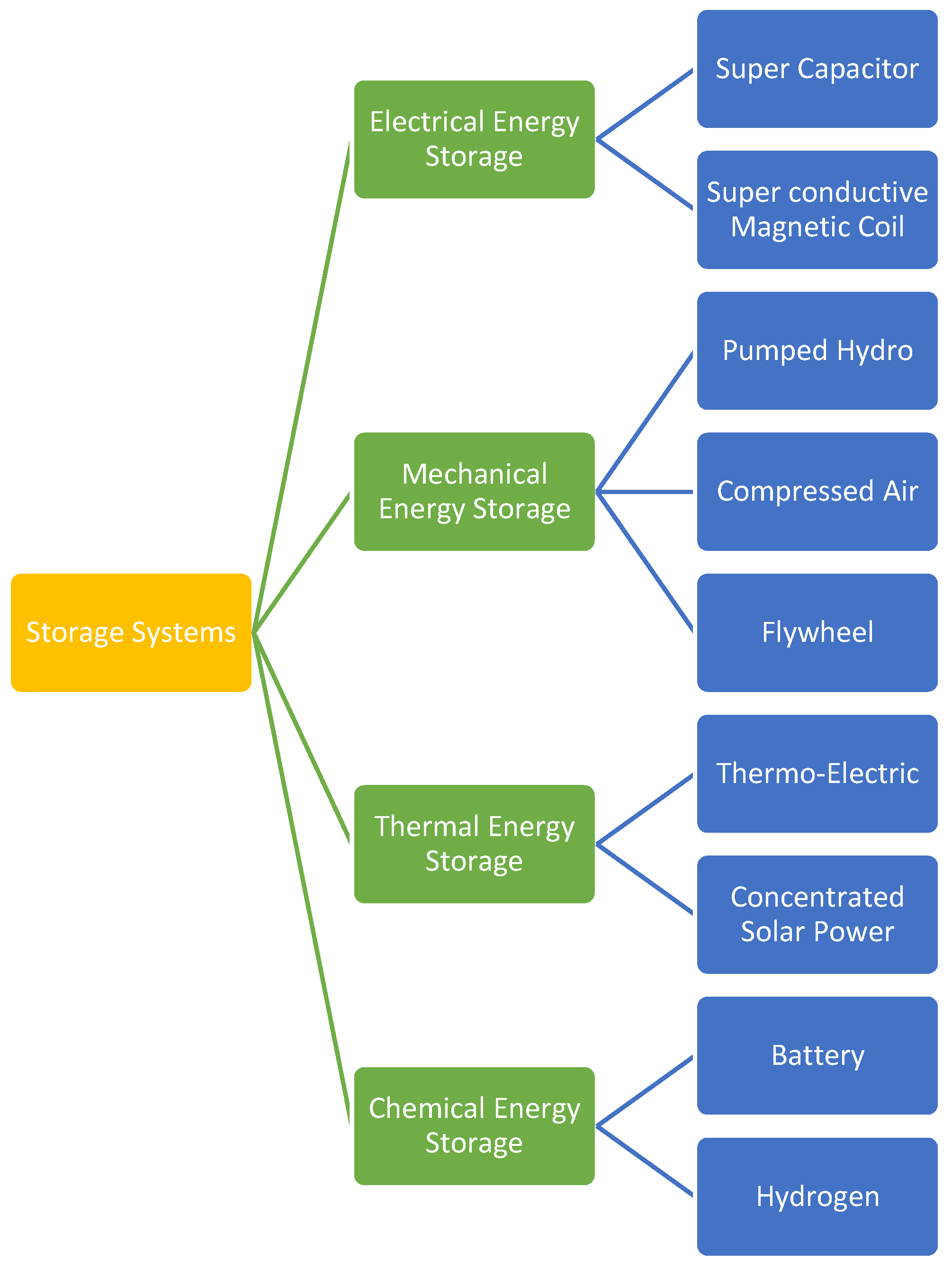
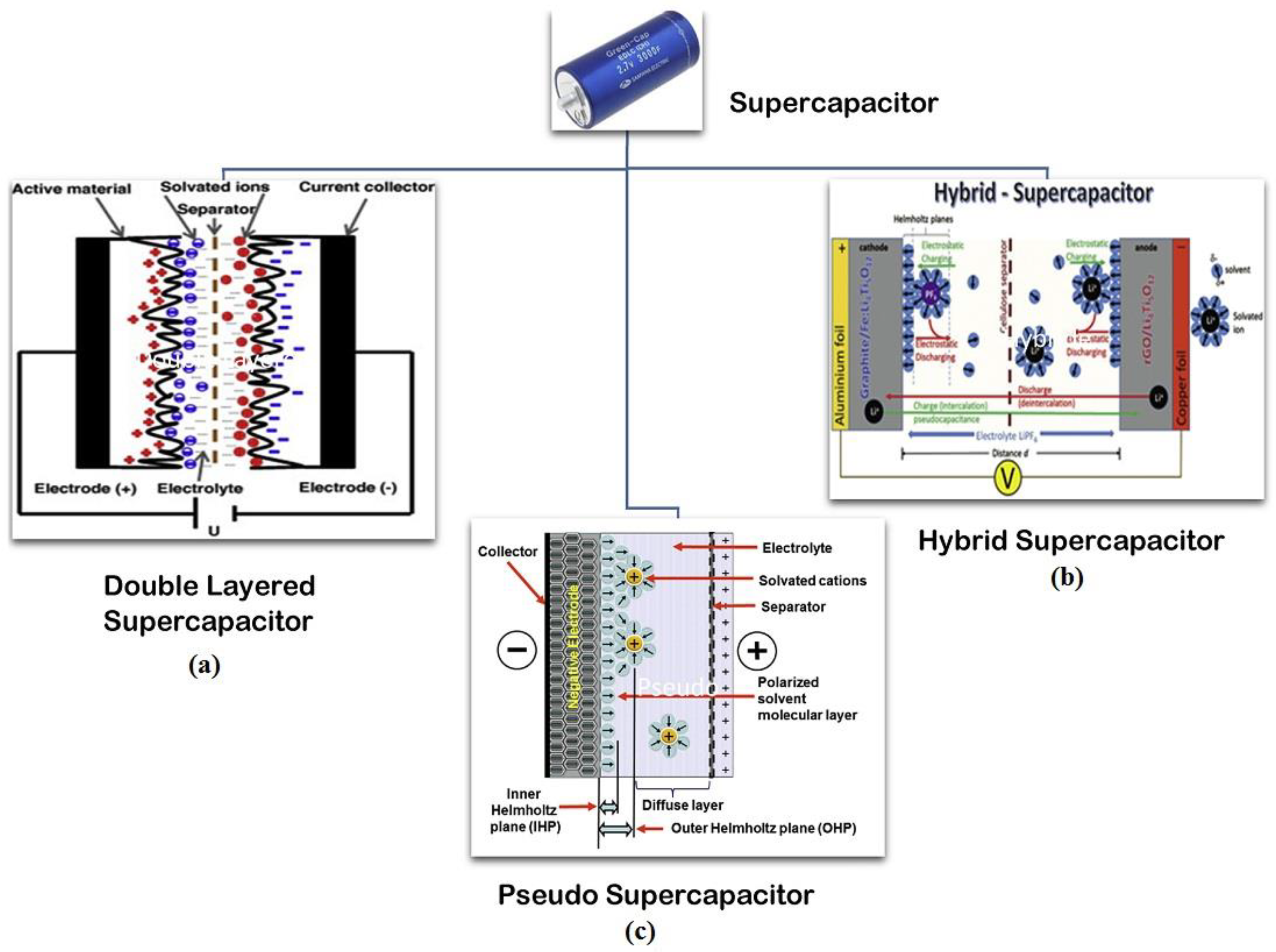




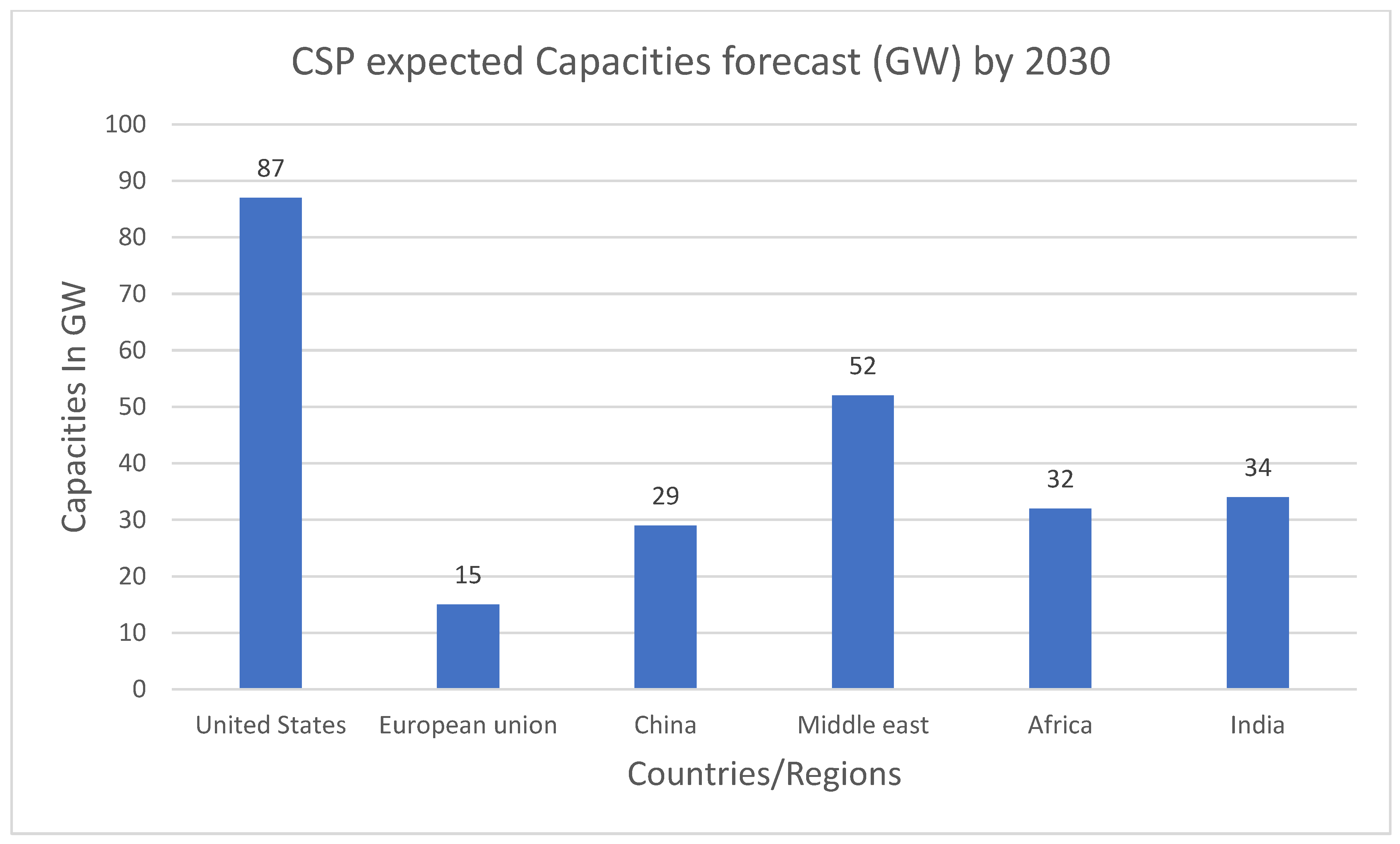


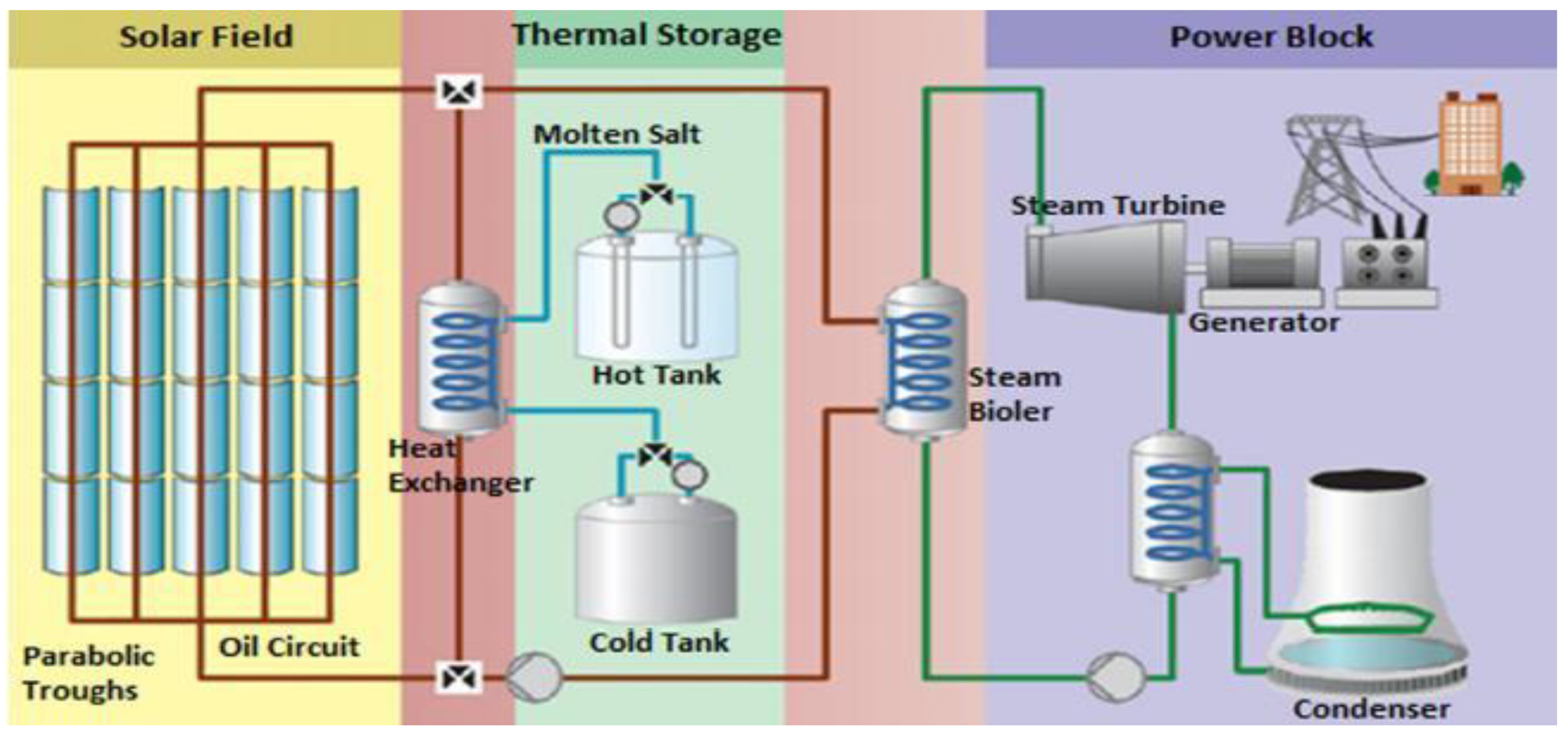
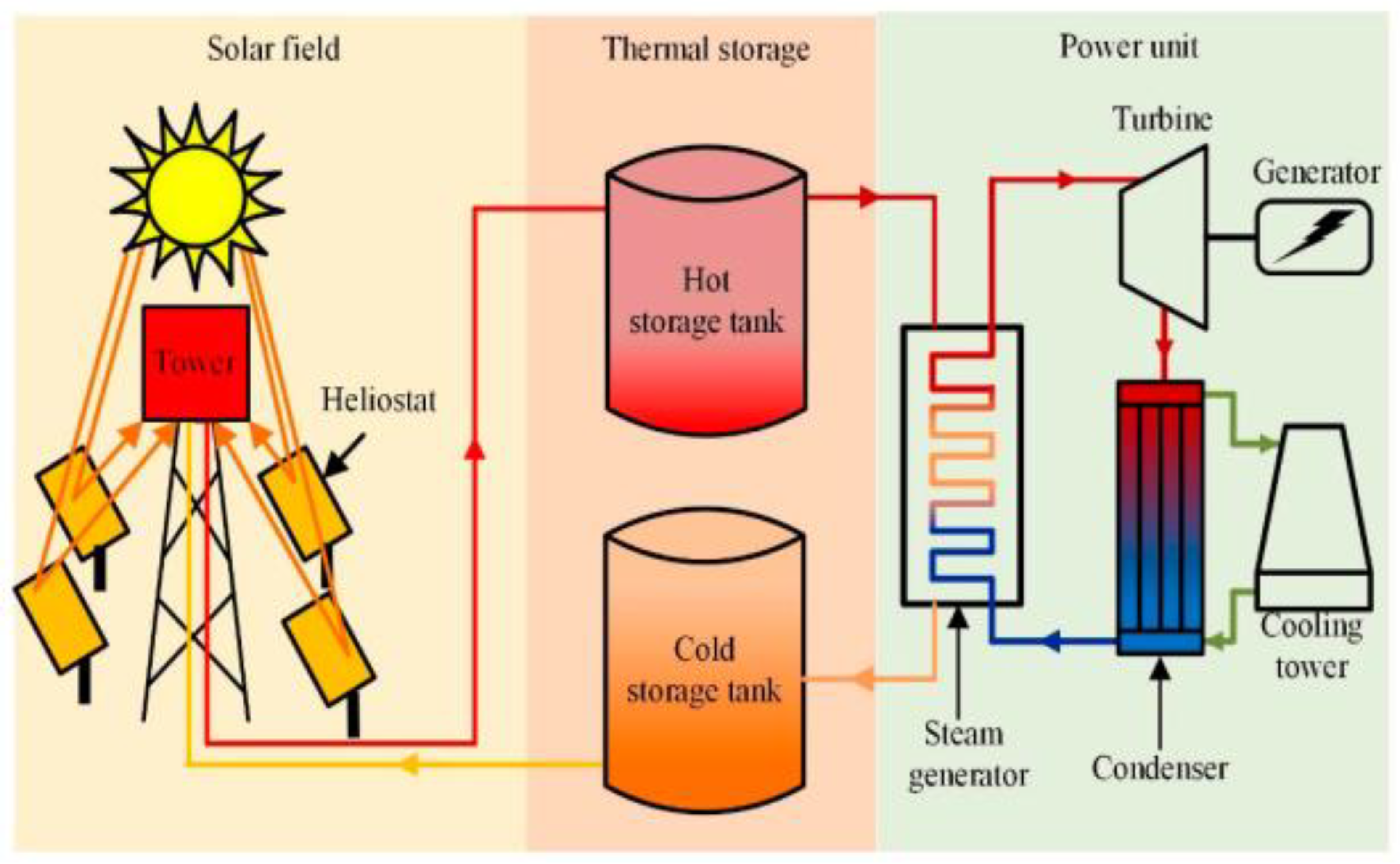

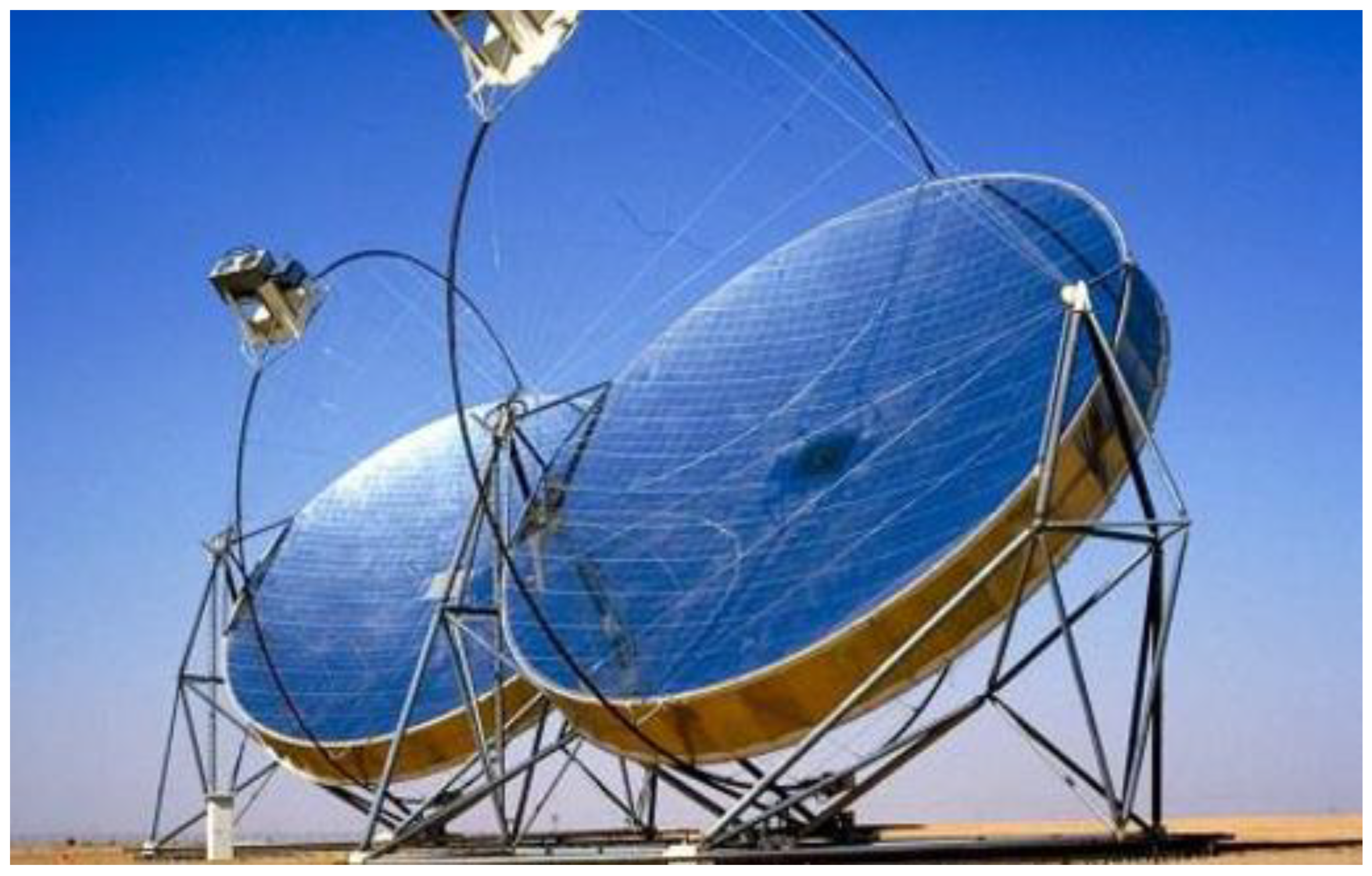

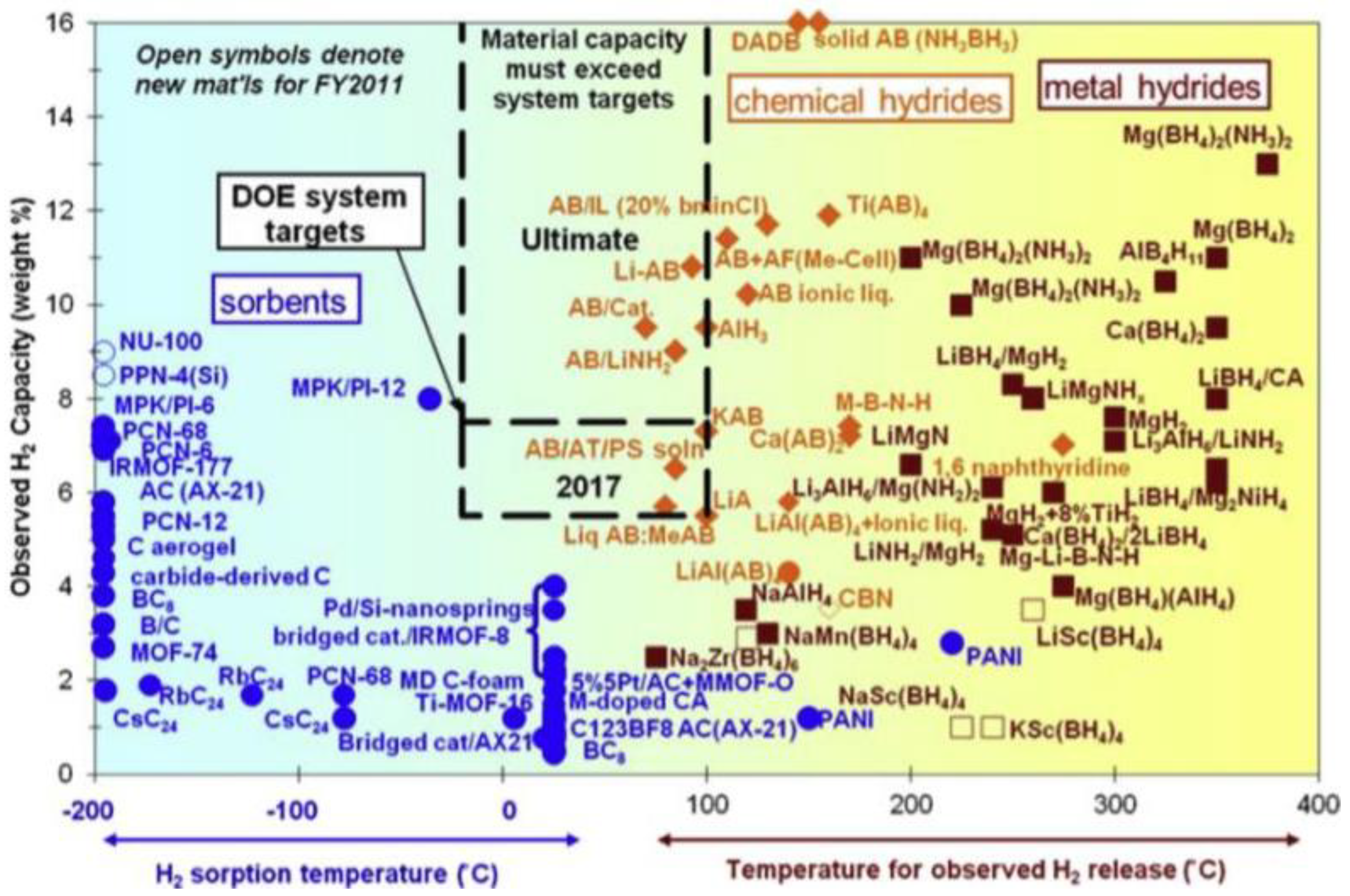
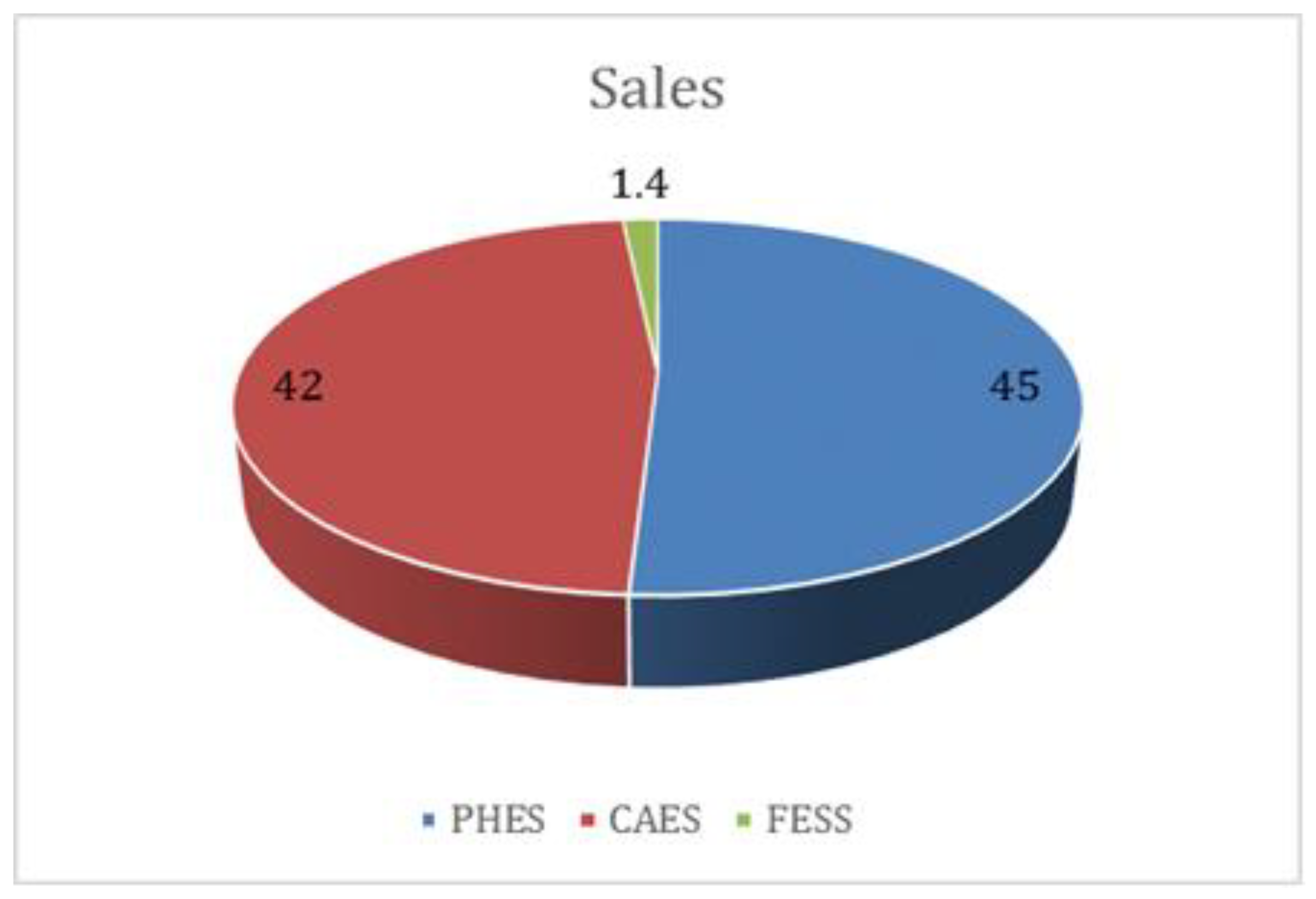
| (a) | |||
| Project with Location | Capacity [MW] | Storage | Status |
| Feicheng in China | Has a capacity of 50 MW | In the form salt caverns. | It is currently in the planning stage. |
| Zhangjiakou in China | Has a capacity of 100 MW | In the form salt Air Tank. | It is currently under construction. |
| Jintan in China | Has a capacity of 50 MW | In the form salt caverns. | It is currently under construction. |
| (b) | |||
| Project with Location | Capacity [MW] | Storage | Status |
| Hunter in Germany | Has a capacity of 290 MW | In the form salt caverns. | It is currently in operation. |
| Larne in Northern Ireland | Its capacity is of 330 MW | In the form salt caverns. | It is currently in operation |
| Nebraska in the USA | Has a capacity of 100–300 MW | It uses Porous Formations | It is currently in the planning stage |
| PG&E in the USA | Has a capacity of 300 MW | It uses Porous Formations | It is currently in the planning stage |
| McIntosh in the USA | Has a capacity of 110 MW | In the form salt caverns. | It is currently in operation |
| Storage System | Advantages | Limitations | References |
|---|---|---|---|
| PHS | 80–90% efficient storage, long-life storage, Least maintenance and generation cost. | High installation cost, feasible in the regions with bulk water supplies only. | [56,59,63,65,66,105,122,123,144,145] |
| CAES | Good choice for energy storage in air-rich areas, green energy, and less cost for maintenance. | High capital cost, not as much efficient as PHS. | [67,68,69,70,72,73,74,75,105,146] |
| FESS | Less maintenance cost, long life, good energy power density, high efficiency, and green energy. | It’s applicable in high wind speed areas, not reliable, and has high initial costs. | [81,82,83,84,85,86,87,105] |
| Battery storage | Good for short-term energy storage, can be used in portable devices, can be used in huge power systems, and adds more value to system stability. | Not so efficient, reduced cyclability, electrodes decompose with time, and used for short-term storage only. | [2,105,109,110,111,112,115,118,119,120,121,122,147,148,149] |
| SMES | Highly efficient and rapid bidirectional power transfer can occur by using SMES in energy storage systems. | Short-term storage, and cannot store large energy values. | [28,43,44] |
| Super capacitor storage | Improved cyclability as compared to a battery, high power density, and low maintenance cost. | Short-term storage, voltage losses with charge, and cannot store large energy values. | [26,30,38,39,40,41] |
| Hydrogen storage | Readily available, clean energy can be transported, and highly efficient. | Takes a long time when refueled, high cost, and is difficult to store. | [124,125,126,127,128,129,131,150,151,152] |
| Solar thermal storage | Sunlight can be used to the energy that can be used to generate electrical power. | High cost for installation, and complex systems. | [32,96,97,98,99,100,101,102,103] |
| Characteristics | Pumped Hydro Storage | Compressed Air Storage | Flywheel Based Storage | Battery Storage | Superconducting Magnetic Energy Storage | Supercapacitor Energy Storage | Hydrogen Energy Storage |
|---|---|---|---|---|---|---|---|
| Storage Category | Mechanical | Mechanical | Chemical | Electrical | Electrical | Chemical | |
| Power/Energy Storage Range | 0.5–3000 GWh | Up to 110 MW | Up to 20 MW | Up to 300 MW | 1–3 MW | 50 kW | 100 GWh |
| Cycles life Range | >10,000 | >10,000 | >10,000 | <2000 | >10,000 | >100,000 | >10,000 |
| Time of Charging/Discharging | Hours | Hours | Minutes | Minute | Minutes | Seconds | Hours |
| Efficiency (%) | 80–90 | 65–75 | 85–95 | 70–95 | >94 | 95 | 18–46 |
| Largest system | Bath county (3003 megawatt (MW)) | McIntosh Plant (110 MW) | Beacon Power (20 MW) | Upton solar farm (300 MW) | 32 Tesla | 5 Wh/kg | Fukushi-ma Hydrogen Energy Research Field (FH2R) 1200 m3) |
| References | [56,59,63,65,66,105,122,123,144,145] | [67,68,69,70,72,73,74,75,105,146] | [81,82,83,84,85,86,87,105] | [2,105,109,110,111,112,115,118,119,120,121,122,138,147,148,149,160,161,162] | [28,43,44] | [26,30,38,39,40,41] | [124,125,126,127,128,131,150,151] |
Disclaimer/Publisher’s Note: The statements, opinions and data contained in all publications are solely those of the individual author(s) and contributor(s) and not of MDPI and/or the editor(s). MDPI and/or the editor(s) disclaim responsibility for any injury to people or property resulting from any ideas, methods, instructions or products referred to in the content. |
© 2024 by the authors. Licensee MDPI, Basel, Switzerland. This article is an open access article distributed under the terms and conditions of the Creative Commons Attribution (CC BY) license (https://creativecommons.org/licenses/by/4.0/).
Share and Cite
Raza, M.S.; Abid, M.I.; Akmal, M.; Munir, H.M.; Haider, Z.M.; Khan, M.O.; Alamri, B.; Alqarni, M. A Comprehensive Assessment of Storage Elements in Hybrid Energy Systems to Optimize Energy Reserves. Sustainability 2024, 16, 8730. https://doi.org/10.3390/su16208730
Raza MS, Abid MI, Akmal M, Munir HM, Haider ZM, Khan MO, Alamri B, Alqarni M. A Comprehensive Assessment of Storage Elements in Hybrid Energy Systems to Optimize Energy Reserves. Sustainability. 2024; 16(20):8730. https://doi.org/10.3390/su16208730
Chicago/Turabian StyleRaza, Muhammad Sarmad, Muhammad Irfan Abid, Muhammad Akmal, Hafiz Mudassir Munir, Zunaib Maqsood Haider, Muhammad Omer Khan, Basem Alamri, and Mohammed Alqarni. 2024. "A Comprehensive Assessment of Storage Elements in Hybrid Energy Systems to Optimize Energy Reserves" Sustainability 16, no. 20: 8730. https://doi.org/10.3390/su16208730
APA StyleRaza, M. S., Abid, M. I., Akmal, M., Munir, H. M., Haider, Z. M., Khan, M. O., Alamri, B., & Alqarni, M. (2024). A Comprehensive Assessment of Storage Elements in Hybrid Energy Systems to Optimize Energy Reserves. Sustainability, 16(20), 8730. https://doi.org/10.3390/su16208730








